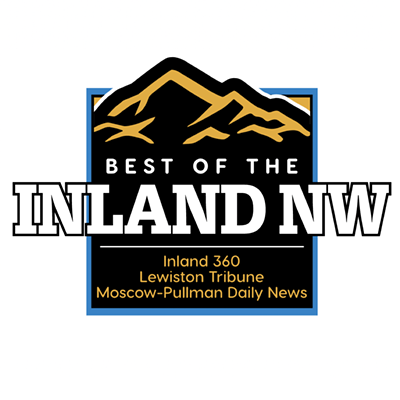If you like to eat, then pollinators are an important part of your life.
A lot of our food would disappear if pollinators weren’t around, and with pollinator numbers in decline, it may be time to show them a little love for their efforts. Average citizens can do that by planting nectar- and pollen-rich plants in their backyards so pollinators don’t have to resort to farm fields where they’re likely to encounter harmful pesticides.
Besides honeybees, butterflies and hummingbirds, other pollinators include native bees, beetles, flies, moths, wasps and bats. As these animals and insects feed on pollen and nectar, they help plants reproduce.
In a talk tonight about pollination and pollinators at the 1912 Center in Moscow, Pam Brunsfeld, former botany instructor and curator for the University of Idaho Stillinger Herbarium, will present around 60 species of plants that can be grown to attract them. Most of them will perform well in a xeriscape, or low-water, garden.
Unlike many nursery plants, native plants are generally adapted to hot, dry summers. With a few inches of mulch, many native plants need to be watered only a couple of times during the summer. In addition, while native plants tend to be a reliable source of nectar, the quality of nectar can vary in nursery plants.
Here are 10 plants Brunsfled suggests for a pollinator-friendly backyard:
Violets. Early blooming violets can be a good food source after a long winter.
Penstemon. A favorite for both pollinators and native xeriscape gardeners, penstemons come in a wide range of colors and bloom seasons. Whites, blues and purples attract bees, and reds and pinks attract hummingbirds and butterflies. These plants need to be watered only once or twice during the summer -- if the plants die, most likely they were overwatered.
Buckwheat. These hardy plants come in a variety of heights and shades ranging from yellow to white. They play an important role as a larval host for some pollinators.
Milkweed. An alternate larval host for the monarch butterfly, these plants attract various pollinators during their bloom season.
Goldenrod. An important late-season plant, goldenrod provides food sources for pollinators after other blooms have finished for the season.
Aster. Another important late-season food source, asters comes in a range of purples, pinks and whites.
Mock Orange. The Idaho state flower, also known as syringa, mock orange is popular with bees, butterflies and hummingbirds. It is one of three white flowering native shrubs, along with serviceberry and oceanspray, that feed pollinators throughout the growing season.
Columbine. A showy garden favorite, columbine is a good food source for pollinators. Prairie smoke, ballhead waterleaf and lupine are other distinctive native plants that are popular garden additions.
Kinnikinnick. Kinnikinnick is popular with gardeners for it’s value as an evergreen groundcover, but it’s also valuable for pollinators.
Willow. While they don’t appear to have blooms, willow catkins house a nectary that provide pollinators with food.
Non-native pollinator favorites
There are a few non-native plants that can make your yard a popular place for pollinators. Very early bloomers like snowdrops, winter aconites, crocus and hellebores provide early sources of nectar for honeybees and other pollinators that emerge as early as January or February. Later in the season, lavender will get visits from all kinds of pollinators, as will catmint -- a member of the mint family that blooms into the fall.
Pollinator-friendly plant sources
Some local sources of seeds and plants include Thorn Creek Native Seed Farm, Genesee, www.nativeseedfarm.com; Pleasant Hill Farm, Troy, (208) 877-1434; Fiddler’s Ridge Farm Potlatch and Moscow, 208-683-2387; Plants of the Wild, Tekoa, www.plantsofthewild.com and the upcoming Idaho Native Plant Society Plant Sale May 17, details at www.whitepineinps.org.
IF YOU GO:
WHAT: “Pollination, Pollinators and Plants” by Pam Brunsfeld
WHEN: 7 tonight
WHERE: 1912 Center Great Room, 412 E. 3rd St., Moscow
COST: Free
A related talk will take place from 5 to 6 p.m. Monday, when Emily Pickeron of the National Resources Conservation Service will discuss ways to create edible landscapes and also attract pollinators. The talk is at The Center at the Colfax Library.




























